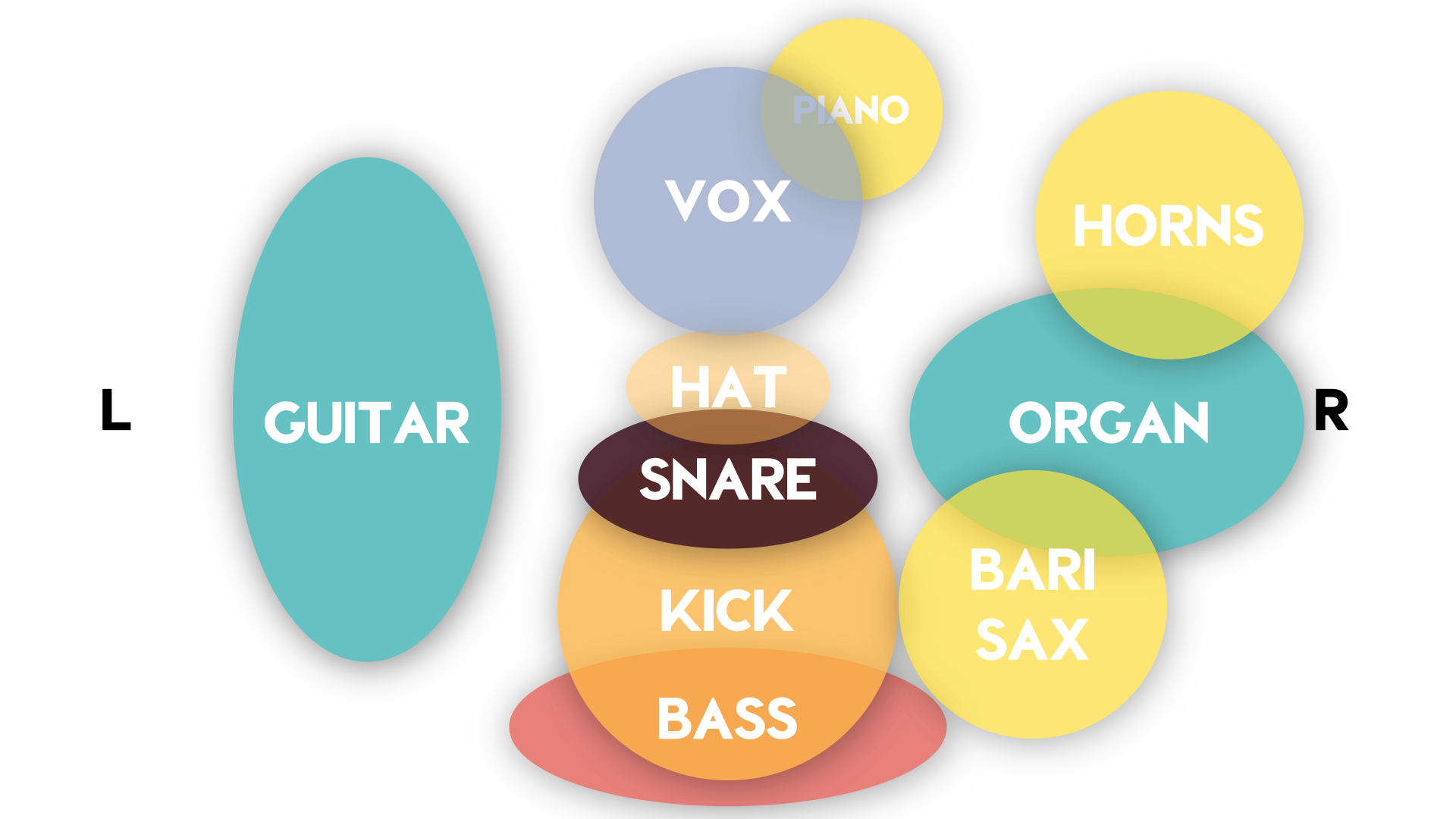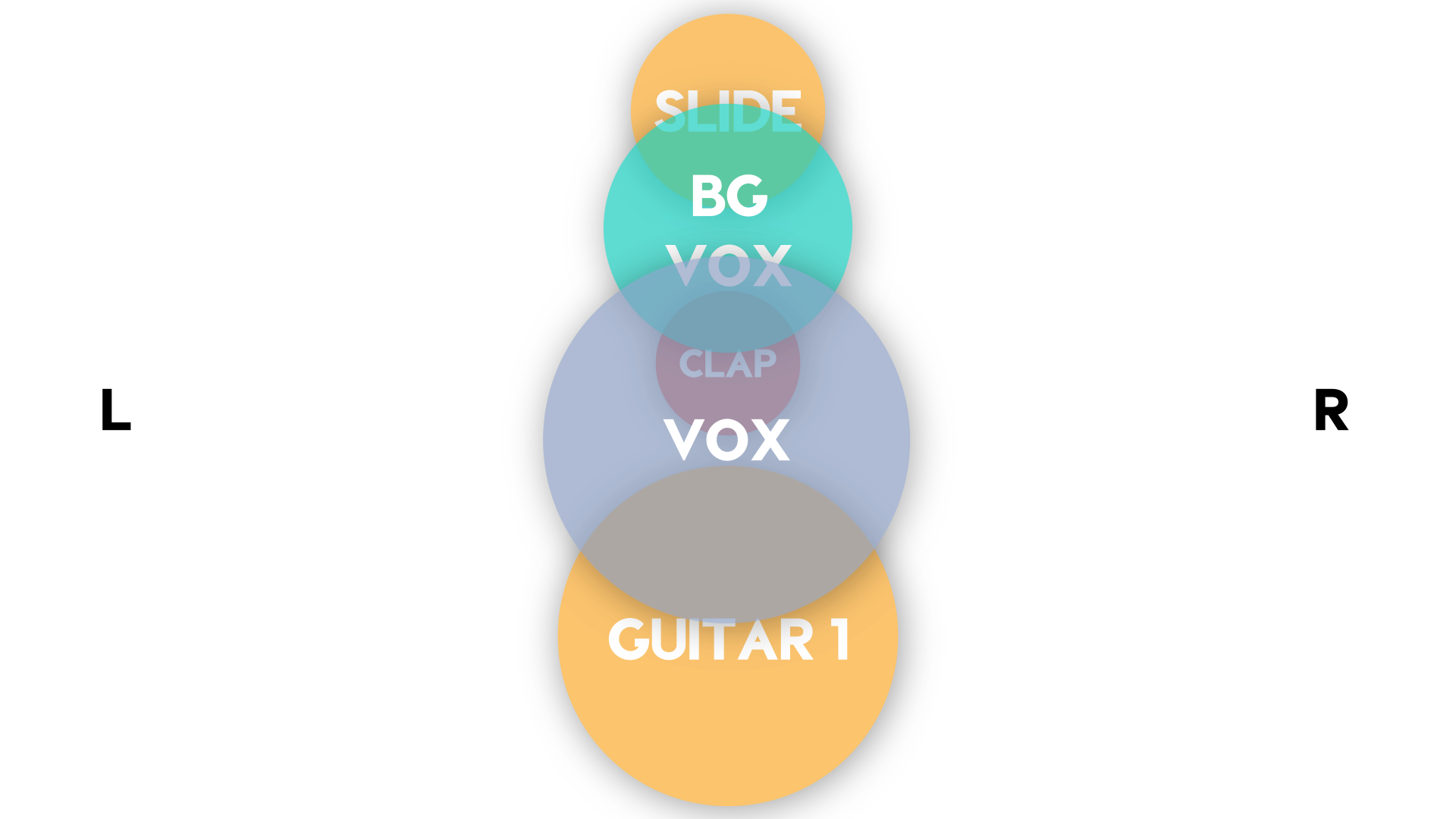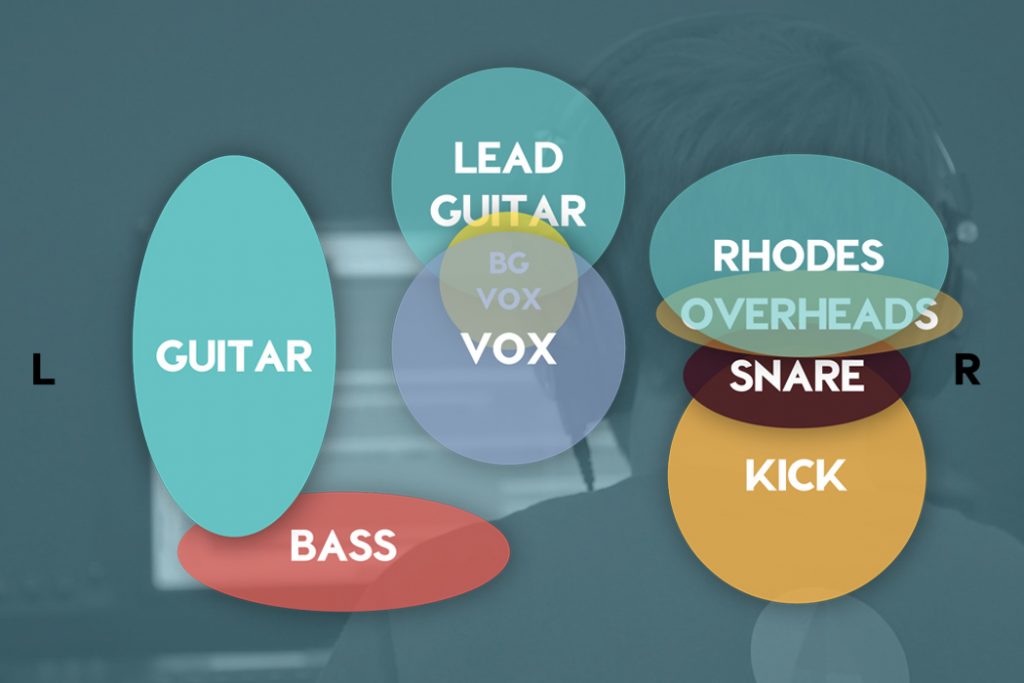The above video comes from part I of our online mixing course series, comprised of Faders Up I: Modern Mix Techniques and Faders Up II: Advanced Mix Techniques. Preview both courses for free today.
In a stereo mix, pan controls allow you to organize where everything is positioned from left to right. Seems simple enough, but the best thing about panning is that, if you’re really listening, it can do a lot more for you. Let’s check out a couple examples of panning and how it can be used to create clarity and impact in a mix, and then below, we’ll explore how to use a panograma to test both your ears, and the balance of your mixing project.
Panning in action
One example of effective panning would be the ’90s track “Everything You Want” by Vertical Horizon. We apologize in advance if this gets stuck in your head.
The drums are positioned the way we would experience them from the audience’s perspective at a live show with the hi-hat on the right. Notice what’s on the opposite side? That jangly electric guitar. Then when we get to the chorus, we’ve got these big doubled guitars and the tambourine just left of center. A lot of these shiny frequencies occupy the same register and have similar timbres, so by positioning them from different angles, they don’t fight with each other for your attention. This is a great use of panning, and a really loud tambourine.
Listen to how the Talking Heads use panning to create clarity between the various elements in this track, “This Must Be The Place (Naive Melody).”
It’s full of sounds made up of similar frequencies and articulations. If they were all on top of each other, they might sound muddy. The way they’re separated in space allows each sound to be unique, identifiable, and bubble up rhythmically in interesting ways.
While panning can be used to solve specific audio problems, there are also certain things in a mix that are almost always in certain places, and it’s worthwhile paying attention to these traditions, even if you decide to break them later. After all, great music is a constant dialogue between fulfilling listeners’ expectations and surprising them.
Centering the “core”
Hop on Spotify, YouTube, or any other streaming platform and do your best to pick something random. Where are the kick drum, snare, bass, and lead vocal located?
I’m willing to guess that they’re right up the middle of the mix. Why is this so common?
If you think of how a band is set up at a concert, the drums are probably in the center of the stage, directly behind the vocalist. The bass player probably isn’t in the middle of the stage (or at least their amp isn’t), but because of how low frequencies behave acoustically, you don’t really localize the bass as coming from a particular direction.
Drummer’s perspective
This sort of audience perspective is exactly what we were hearing on that Vertical Horizon song, with the hi-hats slightly to the right and the ride slightly to the left as well, since that’s how the audience would hear them. It’s also not uncommon to hear the inverse, what’s called the drummer’s perspective, with the hi-hat to the left and ride to the right, as the drummer would hear it.
Check out “Everlong” by the Foo Fighters to hear what this sounds like in action.
Panogramas
When working with references, it can be really helpful to map out where everything is panned in a mix so you have a really good idea of how you might like to approach your own mix. One way to do that is to create some quick “panogramas” that graphically lay out the position of each element in the song. Let’s take a look.
“You Know I’m No Good”
The warmth and heaviness of the drums and bass in this mix recall past generations of Motown and soul music. Pay attention to the relationships between all the core elements. Amy Winehouse’s mix is completely anchored in the middle by the drums, bass, and vocal.

If you walked into a grocery store, and this was only barely audible over the din of customers and carts, you’d still recognize this song by the beat, bassline, and unmistakeable vocal sound. The concept of putting those three elements right up the middle of a mix has become so commonplace, it can sound weird when they’re not there.
“Upward Over the Mountain”
Having a big, heavy-hitting mix is cool, but it isn’t always appropriate. Iron & Wine’s “Upward Over the Mountain” is a perfect example of why.
While this might not be the most typical mix technique you’ll hear, it’s firmly rooted in the genre-specific folk traditions of lo-fi, vocal-centric, mono mixes.

This specific sound is small and dark, creating an ambience that enhances its visceral impact (and works with the buzzing in the background). This whole album was actually recorded at the artist’s home with a four-track recorder. They intended to re-record it properly with a rhythm section later, but it just felt and sounded right so they didn’t do anything else to it.
“Come Together”
Last but not least, let’s have a look at “Come Together” by the Beatles. Notice how instruments that have similar registers are put on opposite sides.
Interestingly, we have electric guitar on the left, bass and vocals in the middle, and drums and keyboards to the right. While this is characteristic of lots of Beatles tracks, it’s definitely not the norm for modern pop and rock acts to have records panned this way. Because of the breadth of the space, every instrument is super clear in the mix.

Take a moment to create a panograma of your own for your reference track. You can print off a blank one, or just draw it on a scrap of paper.
Download: Blank Panograma
Improve all aspects of your music on Soundfly.
Subscribe to get unlimited access to all of our course content, an invitation to join our members-only Slack community forum, exclusive perks from partner brands, and massive discounts on personalized mentor sessions for guided learning. Learn what you want, whenever you want, with total freedom.





